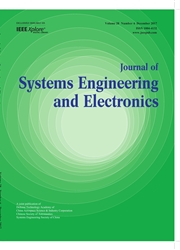

 中文摘要:
中文摘要:
Space electromagnetic docking technology,free of propellant and plume contamination,offers continuous,reversible and synchronous controllability,which is widely applied in the future routine on-orbit servicing missions.Due to the inherent nonlinearities,couplings and uncertainties of an electromagnetic force model,the dynamics and control problems of them are difficult.A new modeling approach for relative motion dynamics with intersatellite force is proposed.To resolve these control problems better,a novel nonlinear control method for soft space electromagnetic docking is proposed,which combines merits of artificial potential function method,Lyapunov theory and extended state observer.In addition,the angular momentum management problem of space electromagnetic docking and approaches of handling it by exploiting the Earth’s magnetic torque are investigated.Finally,nonlinear simulation results demonstrate the feasibility of the dynamic model and the novel nonlinear control method.
 英文摘要:
英文摘要:
Space electromagnetic docking technology, free of propellant and plume contamination, offers continuous, reversible and synchronous controllability, which is widely applied in the future routine on-orbit servicing missions. Due to the inherent nonlinearities, couplings and uncertainties of an electromagnetic force model, the dynamics and control problems of them are difficult. A new modeling approach for relative motion dynamics with intersatellite force is proposed. To resolve these control problems better, a novel nonlinear control method for soft space electro-magnetic docking is proposed, which combines merits of artificial potential function method, Lyapunov theory and extended state observer. In addition, the angular momentum management problem of space electromagnetic docking and approaches of handling it by exploiting the Earth's magnetic torque are investigated. Finally, nonlinear simulation results demonstrate the feasibility of the dynamic model and the novel nonlinear control method.
 同期刊论文项目
同期刊论文项目
 同项目期刊论文
同项目期刊论文
 期刊信息
期刊信息
